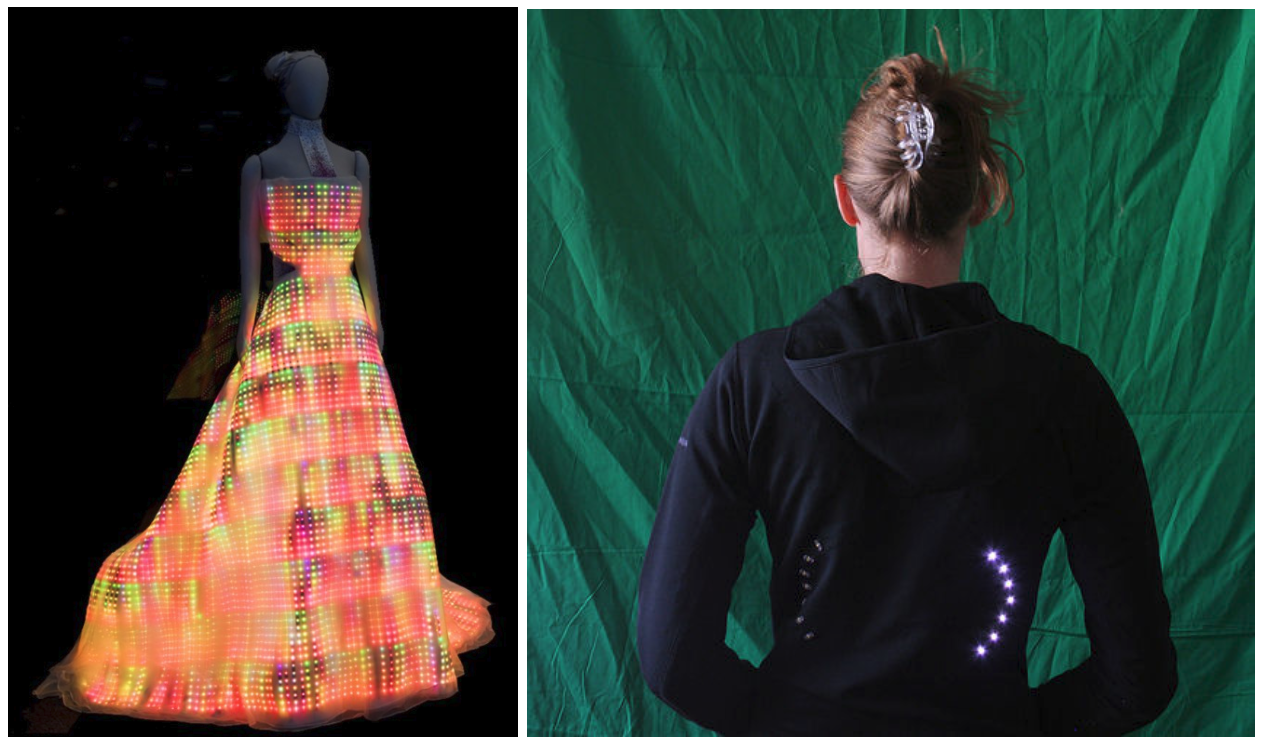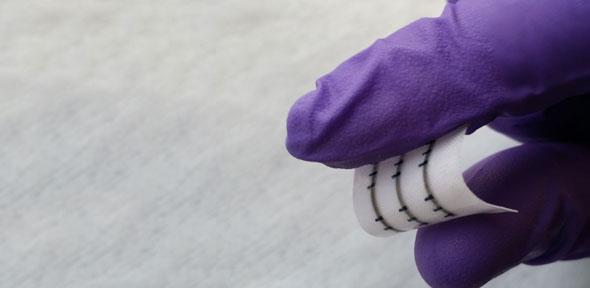By Aalyia Shaukat, contributing writer
Material scientists and engineers at the University of Cambridge have recently shown the potential for truly wearable electronics by successfully printing simple circuitry into clothing and other soft substrates. This differs from previous e-textile technologies that use thin conductive fibers with relatively bulky printed circuit boards (PCBs). While people have come out with some pretty innovative embroidery and some eminently practical designs (Fig. 1 ), the ability to simply print an integrated circuit (IC) onto fabrics can potentially augment, or even replace, the need for the hard and often unwieldy substrates that come with electronics.

Fig. 1: Galaxy dress (left) developed by Cutecircuit with 24,000 flat and thin LEDs and the Turn Signal Biking Jacket designed by Leah Buechley with the Arduino’s wearable microcontroller, the Lilypad.
The paper published in the Nature Communications journal details the process and materials used to inkjet print heterostructures ― the tiny solid-state devices used to make electronic chips. The team of researchers managed to fabricate an inverter, a capacitor, a reprogrammable logic OR gate, a single transistor memory cell, and p-type and n-type logic inverters. “Although we demonstrated very simple integrated circuits, our process is scalable and there are no fundamental obstacles to the technological development of wearable electronic devices both in terms of their complexity and performance,” says Dr. Felice Torrisi of the Cambridge Graphene Center.

The team’s graphene heterostructure field-effect transistors (FETs) demonstrated a high electron mobility ― a parameter that measures the agility of an electron through a metal or semiconductor. Printing the structures on a smooth polyethylene terephthalate (PET) substrate allowed for field-effect mobilities 15 times higher than metal-oxide transistors. For heterostructures printed on textiles rougher than PET, a planarization layer was adopted to reduce the microscopic surface variations to increase the electrical performance[1] [2]. Instead of using printed silver for interconnect, stretchable electrodes were realized with highly conformable conductive polymers allowing for a tighter bending radius.
Lastly, the electronic fabrics could undergo up to 20 wash cycles and be stored at room temperature and pressure without any performance degradation. All of the materials used were cheap, safe, and environmentally friendly, making this technology more accessible for use in wearable electronics, health care, and a variety of Internet of Things (IoT) applications.
Advertisement
Learn more about Electronic Products Magazine





